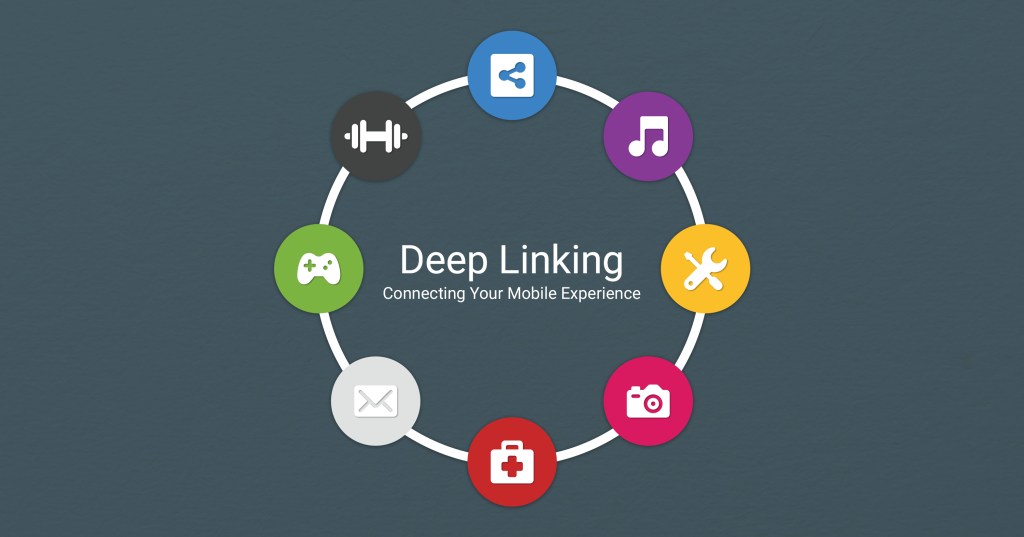Suggestions
How To Promote Your App in Google Search – App Indexing + Deep Linking
In this post, you’ll learn how Google is surfacing deep app content and how digital marketers (ASO & SEO) can prepare iOS and Android deep app screens for Google’s search index. Just so you know, Google indexes your app landing pages (not the internal app screens) on websites. And since crawling and indexing in-app content was impossible until recently, digital marketers had to discover new apps via Google Play or iTunes, which surfaces apps according to their meta data and editorial groupings.
Just so you know, Google indexes your app landing pages (not the internal app screens) on websites. And since crawling and indexing in-app content was impossible until recently, digital marketers had to discover new apps via Google Play or iTunes, which surfaces apps according to their meta data and editorial groupings.
This so-called “Dark Search” situation has created two problems for Google:
- App stores are not promoting the usage of Google for app discovery
- App developers were not incentivized to optimize the app’s internal data for app store search optimization. This limits Google’s mission to collect, examine, and organize the world’s data, which also limits the developers capability to make or earn money.
Now that Google is indexing the app landing pages and deep screens in apps, the app rankings fall into two major categories:
- App Packs – it is more like the app search results that most SEOs are used to. Ranking here relies heavily on the app’s title, description, feedback, and reviews.
- App Deep Links – these are different because they link to specific in-app content. Google has displayed deep links in search results differently since it started app indexing, but there are a couple of standard deep link displays (see below) that seem more common than others.
Most deep-linked results look like the traditional blue links for webpages while other deep link search results are better looking with visual elements like colored “install” buttons, app icons, and star ratings.
In the future, we might see deep links displaying app icon and a small “open on domain.com” button which will allow users to choose between the deep app link and the site link without any additional dialogue screen.
And since Google only supports app indexing on iOS inside the Google and Chrome apps, not in Mobile Safari, it looks like Apple needs to update Safari to allow for Google’s complex linking behaviors as part of their next iOS update (probably in iOS10).
Similarly, Google has been experimenting with standard mobile search results view which omits rich content for users with slow internet connections. This “Standard” search results do not include App Packs (since downloading an app would not appeal to people with slow internet connections), and deep link results will only show as inline blue links (no images, star ratings, app icons or buttons).
These are important findings to keep in mind as we allot time and budget to our App Store Optimization strategy. Also, we need to bear in mind that the benefits of Google app indexing are not limited to surfacing deep app screens in search engine results.
So, How Does Google Rank Deep Links?
Google has a specific algorithm to determine how these deep links should rank in Google search results. And as always, much about Google’s deep link ranking algorithm is unknown, but I’ve pieced together some of the signals that they have announced and inferred quite a few others. Here’s what I think how Google ranks deep links in Google Search: Positive Ranking Factors
Positive Ranking Factors
- Installation Status – Google tracks the number of app downloads in their cloud-based user history
- Proper Technical Implementation – According to Mariya Moeva of Google, developers should “ensure that the technical implementation of App Indexing is correct and that your content is worth it.” She also reiterated in a YouTube video, that app screens with technical implementation errors will not be indexed at all.
- Website Signals – these are the apps’ title tags and description tags also known as the traditional SEO elements.
Negative Ranking Factors
- Content Mismatch Errors – Google will not index app screens that do not provide enough information or not aligned with their corresponding Web pages.
- Interstitials – these are JavaScript banners that appear over the content of a website. These are like pop-ups but without generating a new browser window. This experience can be included in apps (most often for ads), but this has been discouraged by the App Stores.
Why? App interstitials are considered a negative ranking factor for deep links. It can also prevent Google from matching your app screen content to its corresponding Web page content, which could cause “Content Mismatch Errors”.
So what to do? Developers should opt for banners that just move content down on the screen. App Stores have endorsed their own banner installers and even offer app banner code templates that can be you can use to promote your app from the corresponding mobile website.
Aside from ranking on their own, these deep links can also provide SEO benefits for web pages. Google said that indexed app deep links are a known positive ranking factor for its corresponding Web pages, and studies have proven that Web pages can get an average site-wide boost of .29 positions when a proper deep linking markup is in place.
Also, Indexed Android apps will also get maximum exposure in the next release of the Android M. This upcoming OS will include a feature called “Now on Tap,” which presents a deeper integration of Google Now with the rest of the Android’s functionality. It will also allow Google to scan texts on an Android user’s screen, then interpret a “context” from the on-screen text, gather potential queries and automatically display mobile apps that could assist users with those inferred questions.
So, How Can I Get Deep App Screens Indexed For Google Search?

Setting up app indexing for iOS and Android apps is pretty straightforward and well-documented by Google. And here’s how to do it:
- Setup your app to handle deep links.
- Add codes to your corresponding Web pages that reference deep links.
- Optimize your app for private indexing.
These three steps can be done in any order, especially if the app is still in development, but the second step is the most important. Why? Without this, your app will be set up with deep links but will not be set up for app indexing. Meaning, the deep links will not show up in Google Search results.
Remember, in iOS app indexing, the technical implementations may take some time. By the time your firm has finished, Google may have opened up indexing to all iOS apps, and this cumbersome approval process may be a thing of the past.
To know more about Google deep-link indexing, and how to do it, click here.
Conclusion
Google Search and deep linking are changing the ASO & SEO marketing landscape as they dramatically alter the makeup of organic mobile search results. They seem to be becoming a force to be reckoned with in App Store Optimization and Search Engine Optimization.
For digital marketers, this can be viewed as either a threat or a new opportunity. Those who wish to embrace this change will take heed and learn how to optimize Android or iOS apps in all of the formats and locations where they surface.
With this in mind, only relying on app deep links to boost Google search engine traffic is not a viable option. Traditional SEO and mobile SEO practices are still important. This will help secure a spot in Google’s mobile searches.
Moreover, Google seems to be paving the way for indexing apps without web parity. For now, the traditional SEO practices will remain the best way to optimize app content for Google search, but when app screens can be indexed without Web parity, there it’s going to be a new ball game.
I guess now you are wondering. “How long will Google do this? How long will they provide a ranking benefit for deep-linked app content? Will they begin to crawl app content more using deep links like Web links? Will they develop a new bot or crawler? Or will there be another “Mobilegeddon“ happening in the near future?
Let me know what you think in the comments.
Ready to take your ASO the next level?
Get the #1 ASO Course in the Industry.
Learn a lot more!
Discover more App Store Optimization Topics

Keyword Research
The core of ASO... what is Keyword research and what do we need to think about , when we are doing it

Screenshot Optimization
How to increase conversions by working on our Screenshots, strategies, examples, case studies.

Icon Optimization
Do you love your icon? Great, but what about the public... and even more important how do you compete vs other apps?

Competition Analysis
How good is your ASO compared to others? can you outrank them? What are they ranking for?

Search Ads
Learn how to maximize your Search Ads strategy and improve ASO by mastering Apple Search Ads

Market Research
ASO not only give us an advantage to rank higher but also help us to understand the market and even come up with new app ideas.

Social Media
Learn how Social Media affects ASO and overall ranking in the App store

Black Hat ASO
ASO also have the dark side, in this section I discuss what Black HAT ASO is, and the type of naughty things others are doing.

ASO Tools
What is the best ASO tool out there? Let me review them for you and save you tons of $$$

Podcast!
Want to learn more about ASO? Subscribe to Gab Mini ASO Podcast.

Advanced ASO Strategies
Keyword Research for Big boys and Girls... things to keep in mind when we are tyring to take ASO to the next level.

Google Play
App Store Optimization for Google Play.... how to do it, what to keep in mind and how to achieve top results